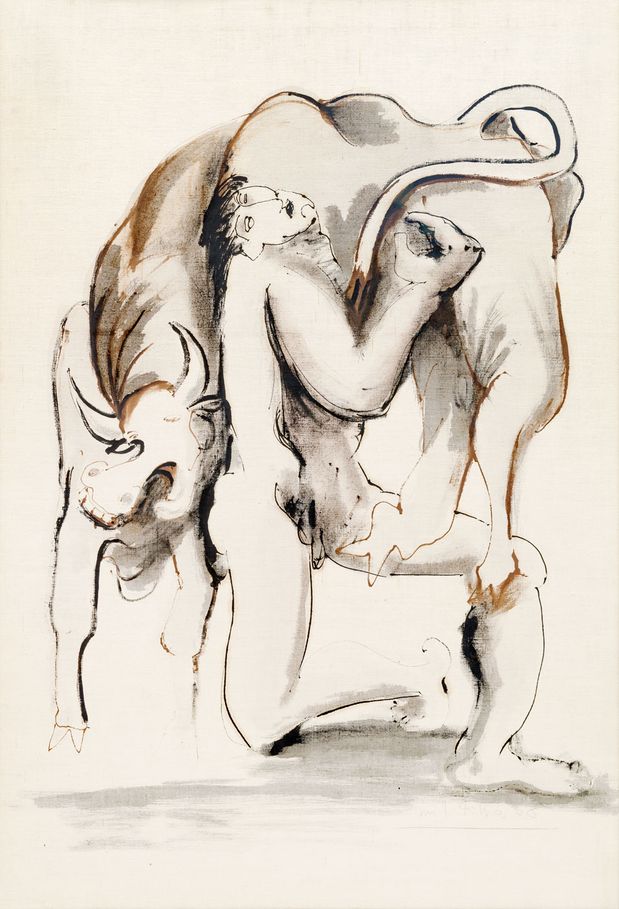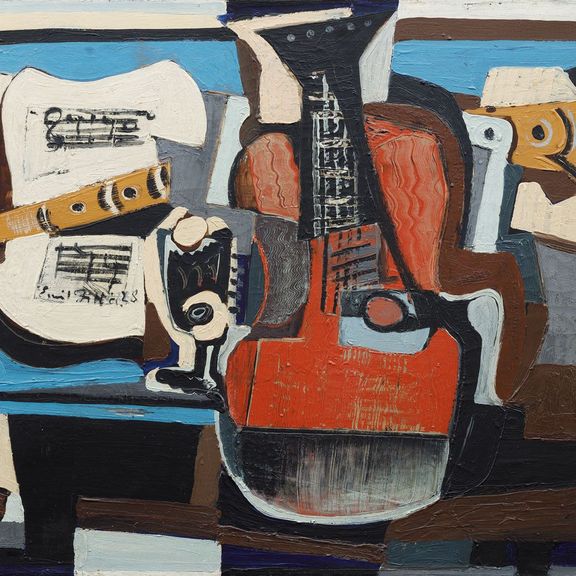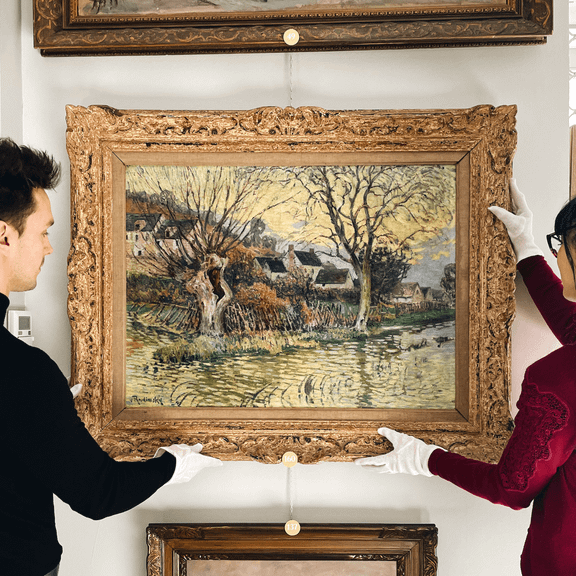
mixed media (oil, ink) on canvas laid down on plywood
1938
lower right
120 × 80 cm
framed, glazed
This masterfully executed work dates back to just before the Second World War and it shows the artist’s dashing skilfulness in brushwork as well as his ability to express the essence of shapes using reduced vehicles of expression. It is also evidence of Filla’s interest in politics, which has been constantly present in his work since his exile to the Netherlands, and at the end of the 1930s this issue proved to be still very current for the artist. The artwork not only demonstrates Filla’s preoccupation with figural painting, but above all represents his series Fights and Struggles, which he started in 1936 and which has a dual character. On the one hand, he focuses on ancient mythological topics, which he transformed into paintings, sculptures, and graphics. His interest in ancient motifs was parallel to that of his nephew, the composer Iša Krejčí, who in 1936 composed the composition entitled Ancient Motifs. Filla was fascinated by the most frequently adapted legends on Heracles, Theseus, Perseus, and Orpheus, which gave him the opportunity to develop compositions full of spontaneity and drama. These heroes embodied the victory of good over evil, for only they were able to stand up to it and defend the desired freedom. In 1938, topics from Greek mythology almost disappeared from Filla’s work and were replaced by animal struggles, in which the stronger and more ferocious attacker wins and the result of which is predetermined, even if a lion or tiger encounters a similarly large mammal, such as a bull. He was dedicated to this topic up until 1939, when slowly but surely started drawing his attention to ballads and national songs. The ingenious vertical composition of the presented painting allowed Filla to capture on a large scale the figure of Theseus, the mythical king and founder-hero of Athens, whose most famous act was slaying of the mythical Minotaur. In the united monumentality of the composition, everything is focused only on the given scene, in which nothing, not even the background or colour, diverts attention from the overall effect. The painting speaks mainly by an unusually calm composition, in which the hero lifts onto his shoulders the killed bull as if he were with him in a harmony, giving the impression of reconciliation rather than relief after a struggle for life and death. The value of this work is increased by the artist’s framing and provenance from an important Prague collection. It has been restored in the past. The authenticity of the painting was verified by the Filla Foundation and it will be listed in the inventory of the artist’s work by prof. PhDr. V. Lahoda, CSc. Assessed during consultations by Mgr. T. Donné and PhDr. R. Michalová, PhD. From the attached expertise by PhDr. K. Srp: “[…] This painting is excellent evidence showing that Filla’s technique was masterful even when using reduced vehicles of expression; it can be considered one of the most emotional works of his series on Theseus. […]”







